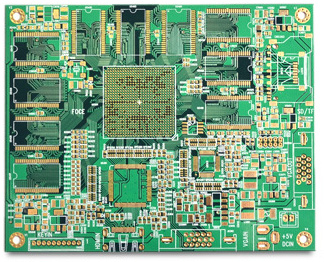ENEPIG PCB
Manufacturing ENEPIG PCB
ENEPIG (Electroless Nickel Electroless Palladium Immersion Gold)
Surface Finish Options for Wire Bonding
While electrolytic nickel gold provides excellent gold wire bonding
performance,it suffers from three major deficiencies, each of which is a major
barrier to its use in leading edge applications:
The process cost is high, driven by to the relatively high gold
thickness required.

At the higher gold thicknesses normally used, solder joint reliability
may be reduced due to the formation of tin-gold intermetallics.
Should the finish be combined with a second final finish, more suitable
for soldering applications,additional costs from secondary imaging operations are also incurred
The electrical bussing required to make connections to the features
during the plating process limit the feature densities that can be
achievedThese limitations have provided an opening for electroless process options.
These include electroless nickel immersion gold (ENIG), electroless nickel electroless gold (ENEG) and
electroless nickel electroless palladium immersion gold (ENEPIG).
Of these three options, ENIG is not generally considered to have an
acceptable process window for high reliability gold wire bonding (although it has been used for
some lower end consumer applications)and ENEG suffers from many of the same process cost issues as
electrolytic nickel gold,with additional challenges from operating more complex electroless gold processes.
While electroless nickel electroless palladium immersion gold (ENEPIG) first emerged in the late 1990’s,
Its market acceptance was delayed by the very volatile price ofpalladium metal around 2000. However, in more recent years,
The market demand has shown strong growth as users have begun to
appreciate the potential of ENEPIG to address many of the new packaging reliability needs, while also meeting
lead free / ROHS requirements.
Apart from the advantage of packaging reliability, the cost of ENEPIG has now become a positive consideration.
With recent increases in the price of gold price to levels above US$800 per troy oz,the production cost of electronic device that required thick gold
electroplating becomes
extremely difficult to control. Since the cost of palladium metal
(US$300 per troy oz) hasremained relatively low in comparison to gold, an opportunity for cost saving by replacement of
gold with palladium is now available.
